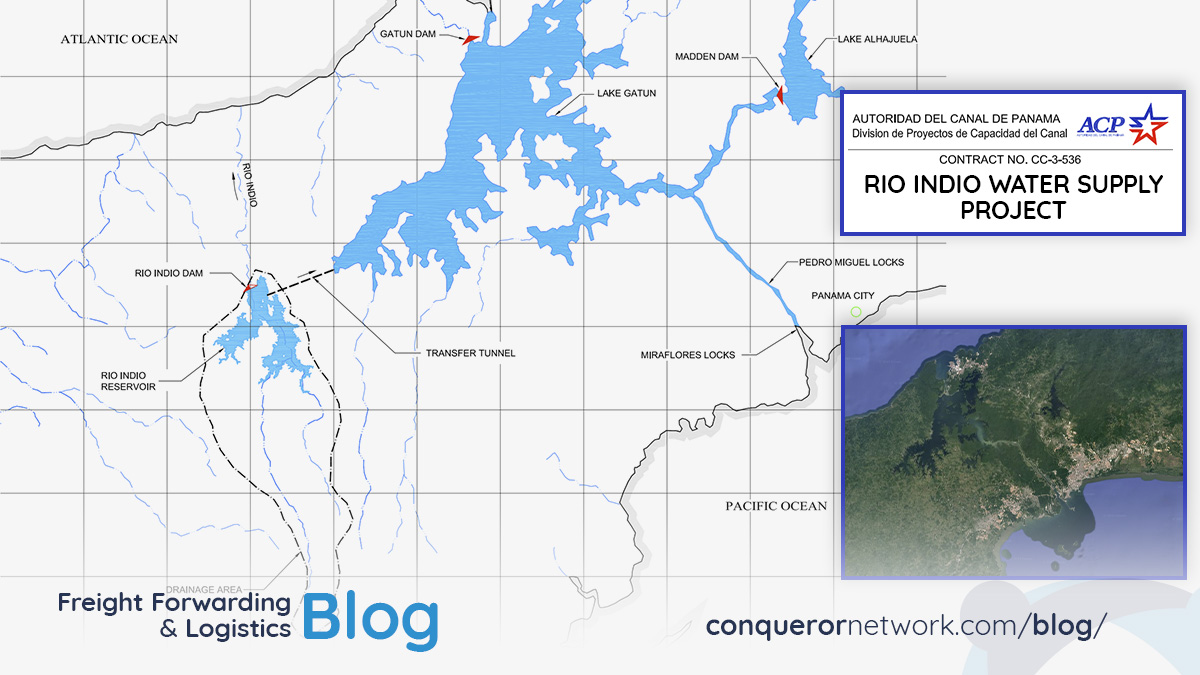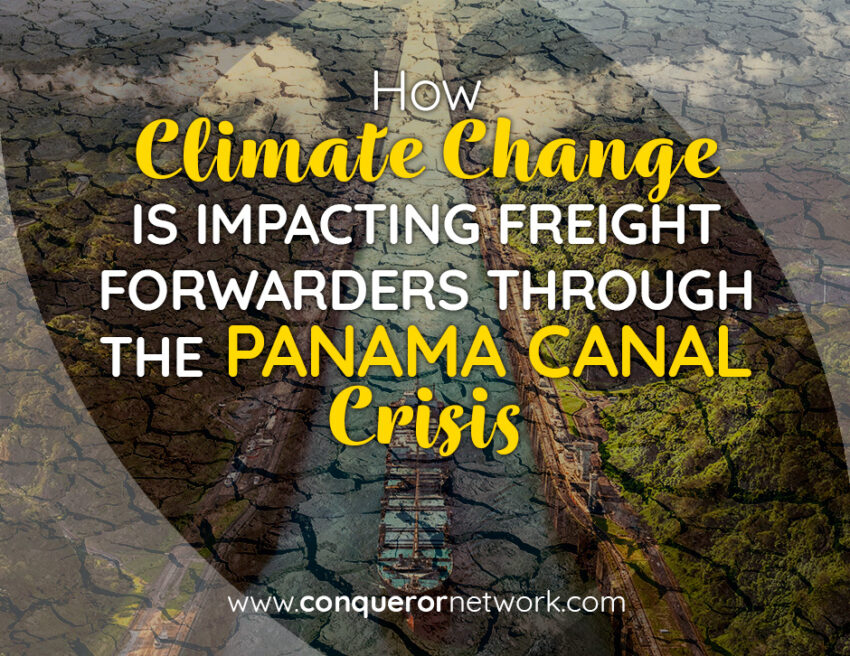The Panama Canal has long been a critical passageway for global shipping, linking the Atlantic and Pacific Oceans and dramatically cutting transit times for vessels around the world. For freight forwarders, who play a vital role in coordinating and optimizing the movement of goods, the smooth operation of the canal is essential. However, in 2025, climate change is disrupting this lifeline, forcing freight forwarders everywhere to rethink their strategies and adapt to new challenges.
The impact of recent droughts has already been profound. By September 2024, canal operations saw roughly one-third fewer vessels able to transit compared to previous years. This reduction led to significant backlogs, with ships forced to queue for weeks. Some carriers have reportedly paid exorbitant fees—up to US$4 million—to “queue jump” and maintain tight delivery schedules. Such operational bottlenecks have driven freight rates through the roof, increasing costs for freight forwarders and shippers worldwide.

The Panama Canal’s Role in Freight Forwarding and Global Trade
Freight forwarders rely heavily on the Panama Canal to facilitate efficient and cost-effective shipping routes. Nearly 6-8% of the world’s sea freight passes through the canal annually, including countless shipments managed by independent freight forwarders and large logistics networks. This shortcut enables forwarders to promise timely deliveries and competitive rates by reducing the voyage between Asia and the East Coast of the Americas by thousands of miles.
But the canal’s operation depends heavily on freshwater. Each transit uses millions of gallons of water from nearby lakes to fill the locks and raise or lower ships. This dependence on freshwater is where climate change introduces major uncertainty.
Climate Change and Water Scarcity: A Growing Threat to Freight Forwarders
The key issue freight forwarders face in 2025 is the severe drought caused by shifting weather patterns and rising temperatures around Panama. Climate change has altered rainfall cycles, resulting in reduced precipitation during critical months. Consecutive years of below-average rainfall have lowered water levels in Lake Gatún, the canal’s primary freshwater source.
For freight forwarders, this means tangible consequences: the Panama Canal Authority has been forced to impose vessel draft restrictions to conserve water. Simply put, ships cannot be loaded to their full capacity, leading to partial loads, increased freight costs, and longer transit times. For forwarders managing supply chains, this reduces predictability and efficiency.
Freight Forwarders Adjusting to Panama Canal Disruptions
The drought and resulting canal restrictions have had a domino effect on the freight forwarding industry. Many freight forwarders now face:
-
Delays and Bottlenecks: With fewer vessels allowed to pass daily and reduced cargo capacities, shipments are frequently delayed, straining tight delivery schedules.
-
Route Diversions: Some freight forwarders are advising clients to reroute vessels via longer alternatives like the Cape of Good Hope or the Suez Canal, increasing transit times and costs.
-
Increased Freight Rates: Reduced canal capacity has triggered surcharges and premium fees, squeezing margins for freight forwarders.
-
Greater Complexity in Planning: Forwarders need to constantly monitor canal water levels and adjust shipments dynamically, relying heavily on digital tracking tools and strong communication with carriers.
The Role of El Niño and Climate Patterns
A major contributor to the Panama Canal’s drought is the El Niño weather phenomenon. El Niño cycles bring warmer ocean temperatures and disrupt typical rainfall patterns in Central America, leading to prolonged dry spells. In 2024 and 2025, a strong El Niño event has exacerbated the situation, delivering some of the driest periods on record.
For freight forwarders, this means the disruptions may become more frequent or severe. Building climate resilience into shipping plans isn’t just wise — it’s essential for maintaining competitive and reliable services.
What Freight Forwarders Can Do to Adapt and Thrive
Despite the challenges, freight forwarders have opportunities to innovate and mitigate risks in this evolving environment:
-
Diversify Shipping Routes: While the Panama Canal remains vital, exploring alternative routes and modes (like rail or air for time-sensitive cargo) can reduce dependence on a single chokepoint.
-
Leverage Technology: Advanced route optimization and real-time monitoring tools help forwarders respond quickly to canal status updates and adjust client expectations proactively.
-
Enhance Collaboration: Building stronger partnerships with carriers, port authorities, and other forwarders can help share information and manage congestion more effectively.
-
Educate Clients: Keeping customers informed about climate impacts and potential delays builds trust and enables more flexible supply chain planning.
-
Advocate for Sustainability: Freight forwarders, as key industry players, can lead efforts to reduce carbon footprints and support green logistics initiatives — helping slow the climate crisis affecting their own operations.
Panama Canal Authority’s Bold Plan to Combat Drought and Secure the Future
To address the ongoing drought challenges and ensure the Panama Canal remains operational even during dry seasons, the Panama Canal Authority (ACP) is advancing a monumental infrastructure project. The plan involves constructing a massive dam on the Rio Indio — an impressive structure measuring 90.5 meters high and 840 meters long. This ambitious project also includes building an 8-kilometer tunnel to link the dam to the existing Gatun Lake, creating a new reservoir with a capacity of 1.25 billion cubic meters.
Once completed, this new reservoir would significantly boost canal capacity by allowing up to 15 additional vessels to pass through during the dry season. Besides helping freight forwarders and shipping companies by easing congestion and operational delays, it will also provide a reliable source of drinking water for the local population—addressing vital community needs.
With an estimated cost of US$1.6 billion, this project is seen as the most viable long-term solution to the increasingly urgent problems climate change is creating for the canal’s operation.
While the dam project promises a substantial impact if approved and completed by 2030, the Panama Canal Authority is also exploring other drought mitigation strategies. These include dredging to deepen and maintain canal channels, relocating water intakes to more sustainable locations, and managing the salinity levels of freshwater sources—all aimed at preserving canal functionality amid changing environmental conditions.
The dam project symbolizes a proactive approach to safeguarding the canal’s future amid climate uncertainty. However, it also signals that disruptions and adjustments in the canal’s operation and the broader freight forwarding landscape may persist in the near term.
The Bigger Picture: Climate Change and the Future of Freight Forwarding
The Panama Canal’s climate challenges are a microcosm of larger shifts reshaping global logistics. Freight forwarders must anticipate increased volatility from weather-related disruptions, from rising sea levels to extreme storms and shifting trade routes. Being part of a strong freight forwarding network can offer the collective knowledge, resources, and flexibility needed to navigate this uncertain future.
As the planet warms, resilience, adaptability, and sustainability will become as important as cost and speed in freight forwarding decisions. Forwarders who embrace these principles will not only survive the Panama Canal crisis but thrive as leaders in the new era of climate-smart logistics.
Conclusion
Freight forwarders in 2025 face a tough new reality as climate change dramatically affects one of their most critical assets — the Panama Canal. Water shortages, vessel restrictions, and unpredictable transit times challenge forwarders to rethink their strategies and embrace innovation. By understanding these impacts and adopting proactive measures, freight forwarders can turn the climate crisis into an opportunity for smarter, more resilient global shipping. The future of freight forwarding depends on how well the industry adapts today — starting with tackling the Panama Canal’s climate challenges head-on.


